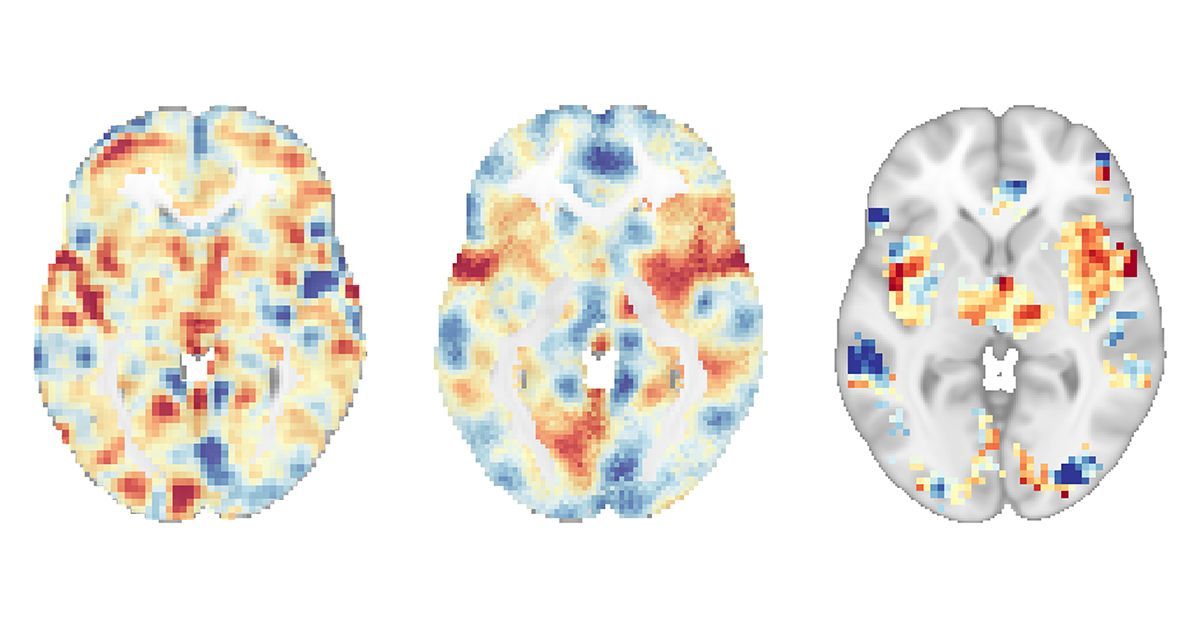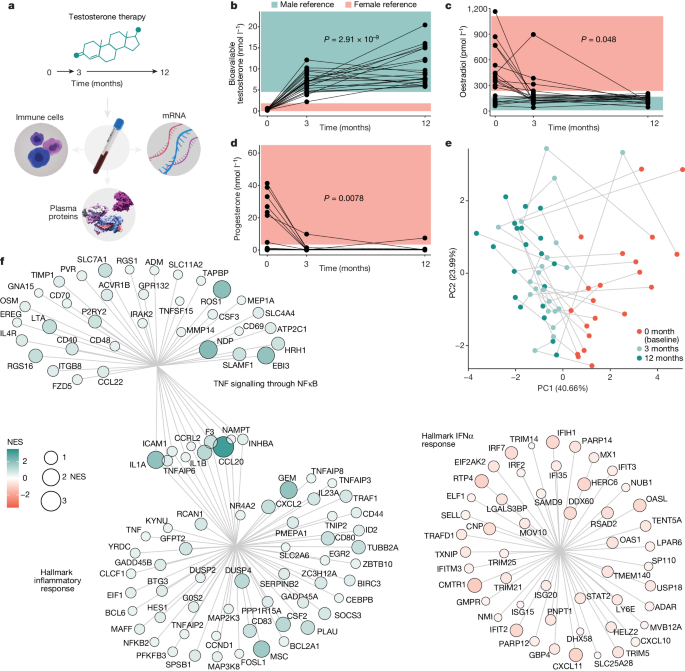2024-09-05 カリフォルニア大学サンディエゴ校(UCSD)
 These brain scans show different neural signatures associated with pain response: the NAPS (left) is associated with the emotional experience of pain, the SIIPS-1 (center) is related to our expectations of pain and other psychosocial factors, and the NPS (right) is associated with pain intensity. Researchers at UC San Diego found that mindfulness meditation can modulate the NAPS and NPS, but not the SIIPS-1, showing that different parts of the brain are engaged in mindfulness-based pain relief compared to placebo. Photo credit: UC San Diego Health Sciences
These brain scans show different neural signatures associated with pain response: the NAPS (left) is associated with the emotional experience of pain, the SIIPS-1 (center) is related to our expectations of pain and other psychosocial factors, and the NPS (right) is associated with pain intensity. Researchers at UC San Diego found that mindfulness meditation can modulate the NAPS and NPS, but not the SIIPS-1, showing that different parts of the brain are engaged in mindfulness-based pain relief compared to placebo. Photo credit: UC San Diego Health Sciences
<関連情報>
- https://today.ucsd.edu/story/brain-scans-reveal-that-mindfulness-meditation-for-pain-is-not-a-placebo
- https://www.biologicalpsychiatryjournal.com/article/S0006-3223(24)01556-7/abstract
マインドフルネス瞑想とプラセボは、痛みを軽減するために、異なる多変量神経シグネチャーを調節する Mindfulness meditation and placebo modulate distinct multivariate neural signatures to reduce pain
Gabriel Riegner, Jon Dean, Tor D. Wager, Fadel Zeidan
Biological Psychiatry Published:August 29, 2024
DOI:https://doi.org/10.1016/j.biopsych.2024.08.023
ABSTRACT
Background
Rather than a passive reflection of nociception, pain is shaped by the interplay between one’s experiences, current cognitive-affective states, and expectations. The placebo-response, a paradoxical yet reliable phenomenon, is postulated to reduce pain by engaging mechanisms shared with “active” therapies. It has been assumed that mindfulness meditation, practiced by sustaining nonjudgmental awareness of arising sensory events, merely reflects mechanisms evoked by placebo. Recently, brain-based multivariate pattern analysis (MVPA) has been validated to successfully disentangle nociceptive-specific, negative-affective, and placebo-based dimensions of the subjective pain experience.
Methods
To determine if mindfulness meditation engages distinct brain mechanisms from placebo and sham-mindfulness to reduce pain, MVPA pain signatures were applied across two randomized clinical trials that employed overlapping psychophysical pain testing procedures (49°C noxious heat; visual analogue pain scales) and distinct fMRI techniques (blood-oxygen-level dependent; perfusion-based). After baseline pain testing, 115 healthy participants were randomized into a four-session mindfulness meditation (n = 37), placebo-cream conditioning (n = 19), sham-mindfulness meditation (n = 20), or book-listening (n = 39) intervention. After each intervention, noxious heat was administered during fMRI and each manipulation.
Results
A double dissociation in the MVPA signatures supporting pain regulation was revealed by mindfulness meditation as compared to placebo-cream. Mindfulness meditation produced significantly greater reductions in pain intensity and pain unpleasantness ratings, nociceptive-specific and negative-affective pain signatures when compared to placebo-cream, sham-mindfulness meditation and controls. Placebo-cream only reduced the placebo-based signature.
Conclusions
Mindfulness meditation and placebo engage distinct neural pain signatures to reduce pain to demonstrate mechanistic granularity between placebo and mindfulness.


